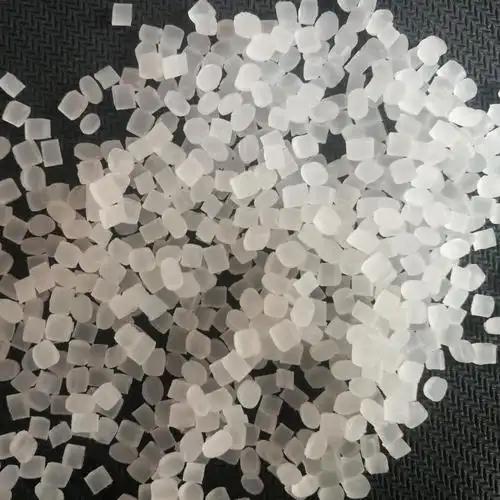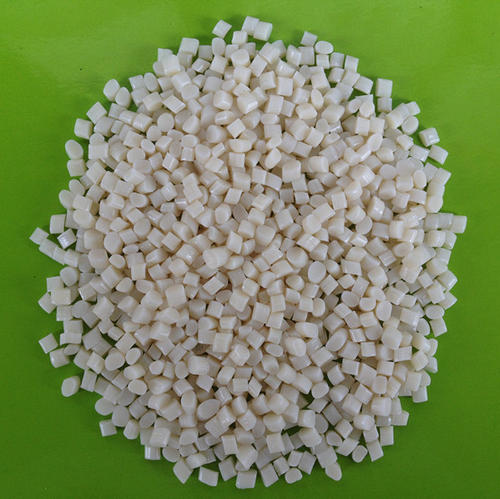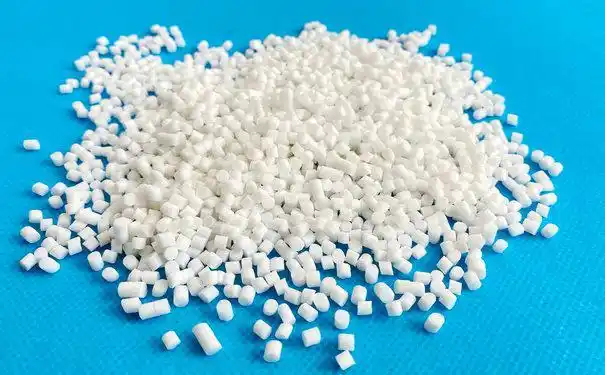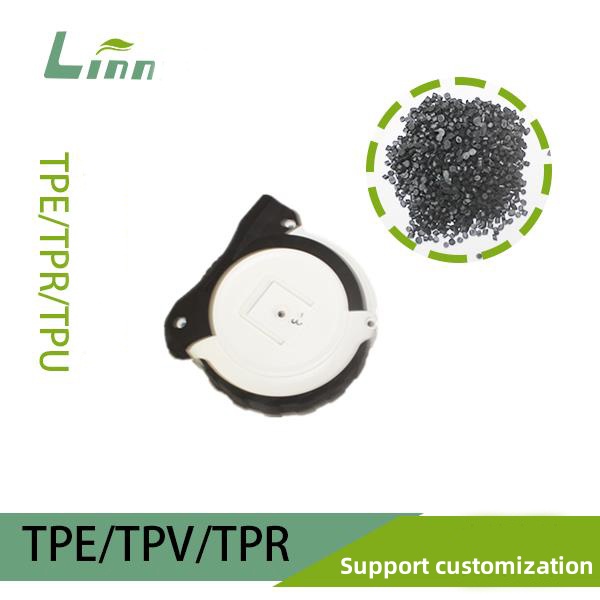Having spent years in the plastics and elastomer industry, I’ve had my fair share of conversations about Thermoplastic Rubber (TPR) pricing. Whether you’re a manufacturer planning a new product line, a procurement specialist managing budgets, or just curious about the costs, understanding TPR prices is key to making informed decisions. In this article, I’ll share my insights on the current cost of TPR per ton in 2025, the factors driving these prices, and practical tips to get the best deals, all based on my experience and the latest market data.

What Is TPR and Why Does Its Price Matter?
TPR, or Thermoplastic Rubber, is a unique material that combines the flexibility and elasticity of rubber with the ease of processing found in thermoplastics. It’s a staple in industries like footwear, automotive, medical devices, and consumer goods because it’s durable, versatile, and cost-effective. From the soft grips on your toothbrush to the soles of your sneakers, TPR is everywhere, quietly making products better.
But here’s the thing: TPR prices can make or break your project budget. Knowing the current market rates and what influences them helps you negotiate better deals, optimize costs, and avoid overpaying for subpar materials. Let’s dive into the numbers and unpack what’s happening in the TPR market in 2025.
Current TPR Price Range in 2025
From my recent dealings with suppliers and market research, TPR prices in 2025 typically fall between $1,470 and $2,250 per metric ton. This range depends on factors like the TPR grade, supplier location, and order volume. For example, standard TPR used for shoe soles might cost closer to $1,470 per ton, while high-performance grades for automotive or medical applications can hit $2,250 per ton or more.
Here’s a quick look at how prices vary by TPR type:
|
TPR Type |
Price Range (USD/ton) |
Common Uses |
Key Features |
|---|---|---|---|
|
SBS-based TPR |
$1,470–$1,800 |
Shoe soles, toys, grips |
Affordable, flexible |
|
SEBS-based TPR |
$1,800–$2,100 |
Medical devices, outdoor gear |
UV-resistant, soft-touch |
|
Specialty TPR |
$2,100–$2,250 |
Automotive seals, industrial parts |
High durability, chemical resistance |
These figures are global averages, but regional differences and supplier-specific pricing can shift the cost. For instance, I’ve seen Chinese suppliers offer SBS-based TPR as low as $1,400 per ton for bulk orders, while European suppliers might charge $2,100 per ton due to logistics and regulatory costs.
What Drives TPR Prices?
Over the years, I’ve noticed that TPR prices are influenced by a handful of key factors. Understanding these can help you anticipate costs and plan smarter:
1. Raw Material Costs
TPR is typically made from styrene-butadiene-styrene (SBS) or styrene-ethylene-butylene-styrene (SEBS), blended with resins like polypropylene (PP) or polystyrene (PS). The cost of these base materials, particularly ethylene and styrene, directly impacts TPR prices. For example, in 2023, a dip in crude oil prices lowered ethylene costs, which brought TPR prices down slightly. In 2025, however, styrene price fluctuations have kept the market dynamic, with occasional spikes pushing costs up.
2. Global Supply and Demand
Demand from industries like automotive, especially for electric vehicles, has been a steady driver of TPR prices. In Asia, where production is high, prices are often lower due to abundant supply. Conversely, weaker demand in sectors like construction, affected by high interest rates, can soften prices. I’ve seen this firsthand—when construction slows, suppliers sometimes lower prices to clear inventory.

3. Logistics and Shipping Costs
Supply chain disruptions, like those seen in 2023 due to Red Sea issues, can inflate TPR prices, especially for importers in Europe or North America. In 2025, logistics have stabilized somewhat, but shipping costs still add 10–20% to the final price for international buyers. I’ve advised clients to source locally when possible to avoid these extra costs.
4. Supplier and Order Size
The supplier you choose and the volume you order can significantly affect pricing. Large manufacturers, like those in China, often offer better rates for orders of 10 tons or more. For example, Xiamen Keyuan Plastic Co. lists TPR at $1,400–$2,100 per ton for bulk orders. Smaller orders or specialty grades from niche suppliers can push prices higher, sometimes to $4–$5 per kg for small batches.
Regional Price Differences
Having worked with clients globally, I’ve seen how TPR prices vary by region:
Asia (China, India): Prices range from $1,400 to $1,900 per ton, thanks to high production capacity and proximity to raw material sources. China’s robust supply chain keeps costs competitive, though demand spikes can cause slight increases.
Europe: Prices are higher, typically $1,600–$2,100 per ton, due to import costs and stricter environmental regulations. The European market faced challenges in 2023 from low demand, but 2025 shows signs of recovery.
North America: Prices align with Europe, around $1,600–$2,200 per ton. The automotive sector, particularly electric vehicles, supports steady demand, keeping prices stable.
How to Secure the Best TPR Prices
Through trial and error, I’ve learned a few tricks to help clients get the most value when sourcing TPR:
Shop Around: Platforms like Alibaba and Made-in-China.com list verified suppliers with competitive prices. For example, Tongxiang Juli Plastic Co. offers TPR at $1,285–$1,450 per ton for orders over 3 tons, while smaller suppliers might charge $2–$4 per kg for specialty grades.
Leverage Bulk Orders: Ordering 10–20 tons can unlock discounts of up to 15%. I once helped a client save $3,000 on a 15-ton order by negotiating with a Chinese supplier.
Track Market Trends: Resources like Procurement Resource provide price forecasts, suggesting TPR prices will remain stable in 2025, with potential dips if construction demand weakens further.
Source Locally: Importing adds costs, so consider regional suppliers. In the US, local distributors can offer competitive prices without the shipping markup.
Check Quality: Low-cost TPR (e.g., $800 per ton) is often recycled or low-grade, which can compromise performance. Always request samples and certifications like ISO 9001 or ROHS.

TPR in Action: Applications and Cost Implications
TPR’s versatility makes it a favorite across industries, but its cost impacts budgets differently depending on the application:
Footwear: SBS-based TPR at $1,470–$1,800 per ton is common for shoe soles due to its flexibility and grip. A small factory producing 5,000 pairs monthly might spend $3,000–$5,000 on TPR, factoring in waste and processing.
Medical Devices: SEBS-based TPR, costing $1,800–$2,100 per ton, is ideal for its biocompatibility. A medical tubing supplier might budget $8,000 for a 4-ton order, prioritizing quality.
Automotive: High-performance TPR at $2,100–$2,250 per ton is used for seals and gaskets. A mid-sized manufacturer might allocate $15,000 for a 7-ton batch, balancing durability and cost.
In my experience, matching the TPR grade to your specific needs—whether it’s flexibility, chemical resistance, or UV stability—prevents overspending on unnecessary features.
The Sustainability Angle and Future Outlook
Sustainability is a growing concern in the industry, and TPR is no exception. While TPR is recyclable, its petrochemical base raises environmental questions. Some suppliers now offer bio-based TPR, which costs 10–20% more but appeals to eco-conscious brands. In India, investments in sustainable TPR production are gaining momentum, which could influence global prices in the future.
Looking ahead to 2026, I expect TPR prices to hold steady unless there are major disruptions in crude oil or styrene supply. The automotive sector’s growth, particularly in electric vehicles, will likely keep demand strong, while innovations in recycled TPR could lower costs for certain grades.
Wrapping Up
Figuring out TPR prices can feel like navigating a maze, but with the right approach, you can make smart choices. The current range of $1,470–$2,250 per ton offers options for various budgets, and strategic sourcing can save you significant costs. Whether you’re crafting shoe soles or automotive parts, focus on quality, compare suppliers, and stay updated on market trends.
If you’re ready to source TPR, check platforms like Alibaba or consult industry reports from Procurement Resource for the latest data. And don’t skimp on quality—investing in reliable TPR pays dividends in product performance and customer satisfaction. Got more questions? Drop them below, and I’ll share what I’ve learned from years in the field!

Related Questions and Answers
Q: Why do TPR prices differ so much across suppliers?
A: Prices vary due to TPR grade, order size, and supplier location. Bulk orders in China might cost $1,400 per ton, while specialty grades in Europe can reach $2,100 per ton. Always compare quotes and verify quality with samples.
Q: Is recycled TPR a cost-effective option?
A: Recycled TPR can be as low as $800 per ton, but it’s often lower quality, suitable for non-critical uses like budget shoe soles. For demanding applications, stick to virgin TPR and check certifications.
Q: How can I forecast TPR prices for 2026?
A: Track raw material costs (e.g., styrene, ethylene) and industry demand, especially in automotive and footwear. Procurement Resource predicts stable prices in 2025–2026, with potential dips if supply increases.
Q: Are there cheaper alternatives to TPR?
A: TPE-S (SEBS-based) or TPU can be alternatives, with prices from $1,200–$2,000 per ton. They offer similar properties but vary in performance. Consult suppliers to match materials to your needs.
Q: How do shipping costs impact TPR pricing?
A: Shipping can add 10–20% to TPR costs, especially for imports to Europe or North America. Local sourcing or bulk orders can save thousands. For example, a 20-ton order from Asia might cut freight costs by $1,500 compared to smaller shipments.





